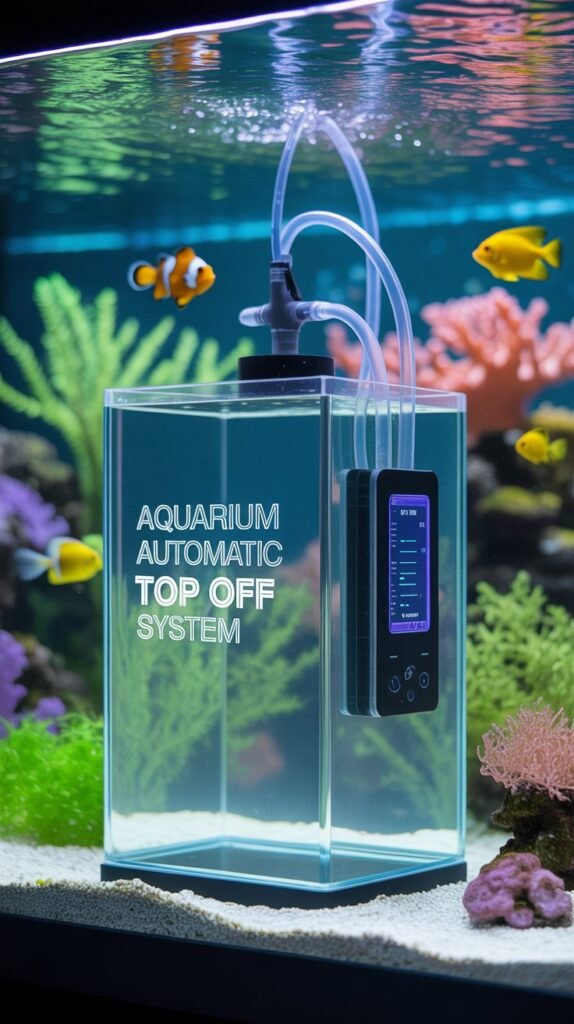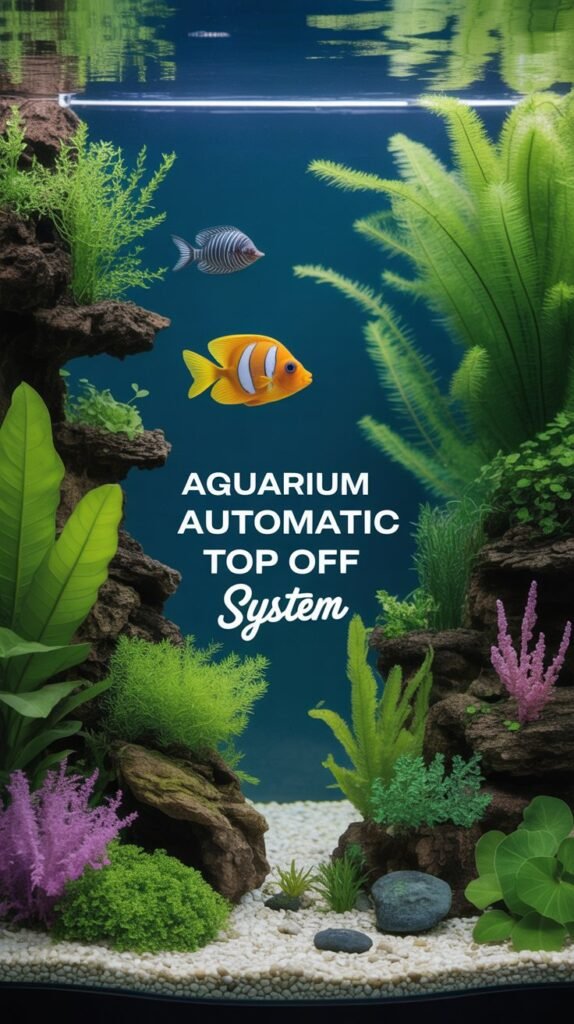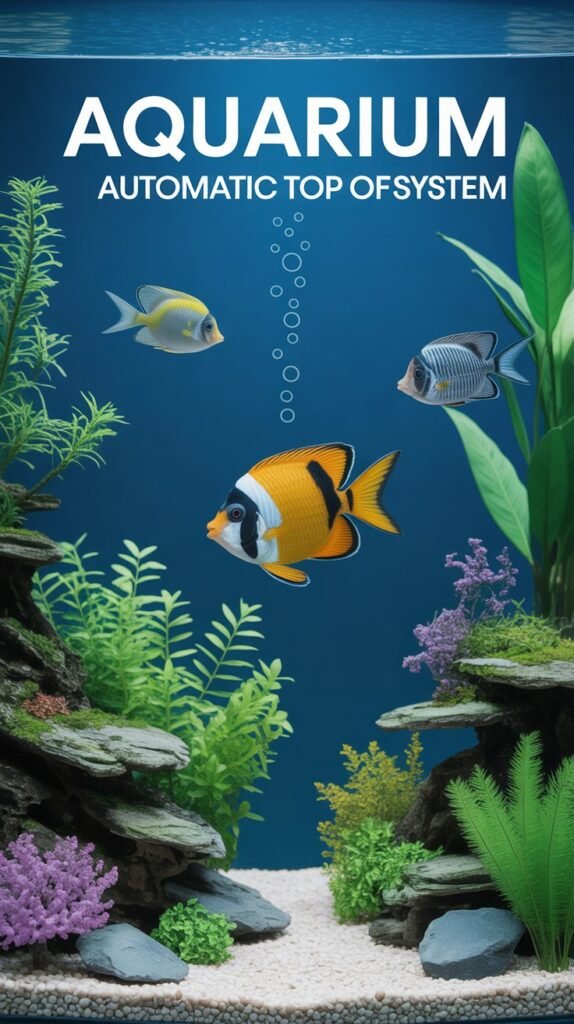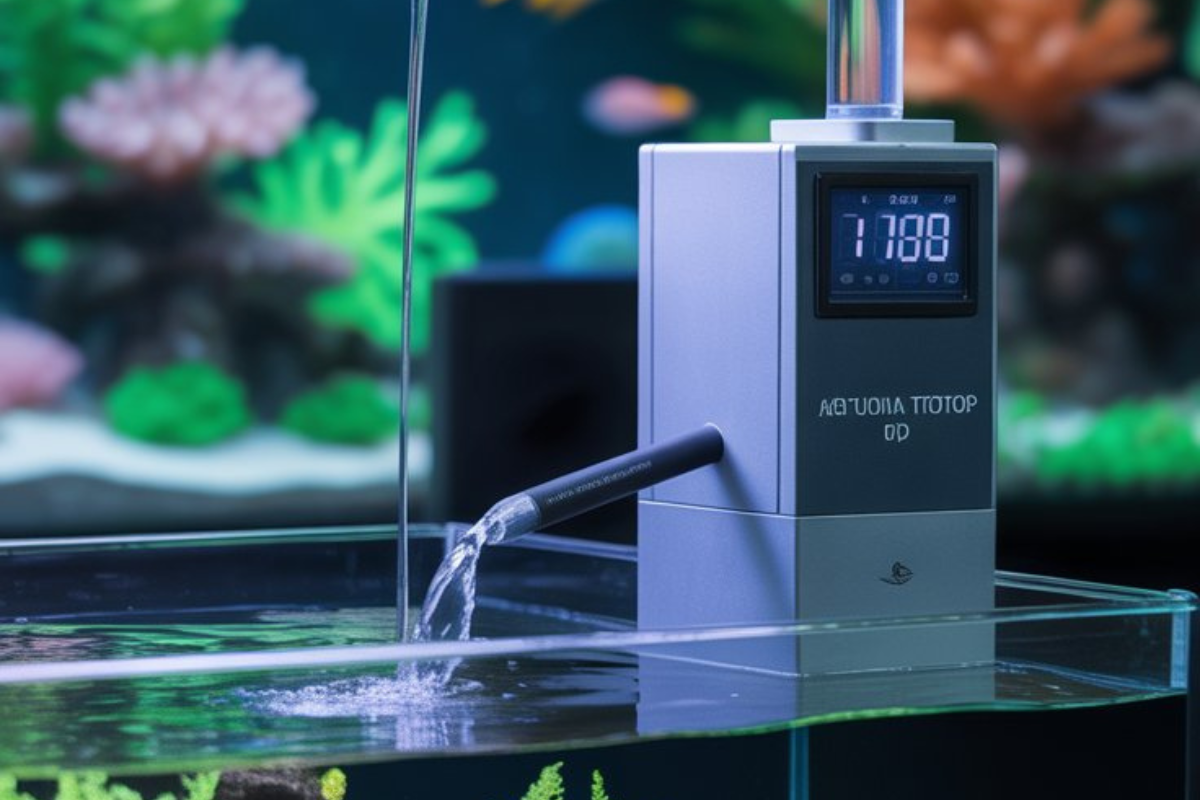Maintaining a thriving aquarium requires consistency. Fish, corals, and plants all depend on stable water conditions, and even small fluctuations can cause stress or health issues. One of the biggest challenges aquarists face is evaporation—when water leaves the tank, but minerals and salts remain behind. This imbalance not only affects water levels but also changes salinity, especially in saltwater tanks.
This is where an aquarium automatic top off system (ATO system) comes in. It’s a smart device designed to automatically replenish evaporated water, keeping your aquarium’s water level stable without constant manual topping off.
In this detailed guide, we’ll explore everything you need to know about aquarium automatic top off systems—their benefits, how they work, different types, installation tips, maintenance, and why they’re essential for serious aquarists.
What is an Aquarium Automatic Top Off System?
An aquarium automatic top off system (commonly called an ATO) is a device that monitors the water level in your tank or sump and automatically adds freshwater to compensate for evaporation.
Instead of checking your aquarium daily and manually pouring in water, an ATO system does the job for you with precision and reliability. This makes it an invaluable tool for both freshwater and saltwater aquariums, as well as reef tanks where salinity stability is critical.
How Does an Automatic Top Off System Work?

The principle behind an ATO system is simple:
- Water Level Sensor – The ATO has one or more sensors that detect when the water level drops below a set point.
- Controller Unit – The controller interprets the sensor signal and activates a pump or solenoid valve.
- Freshwater Reservoir – The pump draws freshwater (RO/DI or dechlorinated tap water) from a reservoir.
- Water Replenishment – Water is pumped into the aquarium or sump until the correct water level is restored.
Most ATO systems include safety features like dual sensors, time-out functions, and alarms to prevent overfilling in case of sensor failure.
Why is an Aquarium Automatic Top Off System Important?
Evaporation in aquariums is inevitable, and its impact can be significant:
- Freshwater Aquariums: Water level drops, affecting filter performance, flow rates, and aesthetics.
- Saltwater Aquariums: Water evaporates, but salt remains, leading to dangerous salinity fluctuations that stress fish and corals.
- Reef Tanks: Even small salinity changes can harm sensitive corals and invertebrates.
An ATO system ensures:
- Stable Water Levels – Keeps equipment like heaters, filters, and protein skimmers working efficiently.
- Consistent Salinity – Crucial for marine and reef tanks.
- Reduced Maintenance – Eliminates the need for daily manual refills.
- Better Fish Health – Prevents stress caused by unstable water conditions.
- Peace of Mind – Especially useful when traveling or during busy schedules.
Benefits of Using an Aquarium Automatic Top Off System
Adding an ATO system to your aquarium setup offers numerous advantages:
1. Time-Saving Convenience
Instead of checking water levels daily, you only need to refill the freshwater reservoir once every few days or weeks.
2. Improved Stability
Stable salinity and water parameters mean healthier fish, thriving corals, and lush plants.
3. Prevents Equipment Damage
Low water levels can cause pumps and heaters to run dry, leading to overheating or equipment failure. ATO systems prevent this risk.
4. Supports Reef Aquariums
Reef tanks are highly sensitive to salinity changes. ATO systems provide the precision needed for coral survival.
5. Travel-Friendly
Going on vacation? With a large enough reservoir, your ATO can maintain water levels for weeks without supervision.
6. Customizable
Modern ATO systems can be integrated with aquarium controllers, alarms, and monitoring apps for added control.
Types of Aquarium Automatic Top Off Systems

There are several types of ATO systems, each with different mechanisms and price points:
1. Float Valve Systems (Basic & Manual)
- Use a simple mechanical float valve to regulate water flow.
- Inexpensive but less precise.
- Best for freshwater aquariums or budget setups.
2. Float Switch Systems (Electric)
- Use an electric float switch to activate a pump.
- More reliable than manual valves.
- Require basic electrical setup.
3. Optical Sensor Systems
- Use infrared or optical sensors to detect water level.
- Highly accurate and less prone to mechanical failure.
- Often used in premium ATO systems.
4. Dual-Sensor or Triple-Sensor Systems
- Include backup sensors for extra safety.
- Prevent overfilling due to sensor failure.
- Ideal for reef and saltwater aquariums.
5. Integrated Controller Systems
- Work with aquarium controllers (e.g., Apex, GHL).
- Provide advanced monitoring, alarms, and automation.
- Best for advanced hobbyists and large tanks.
Choosing the Right Aquarium Automatic Top Off System
When selecting an ATO system, consider the following factors:
1. Tank Size and Evaporation Rate
Larger tanks and open-top aquariums lose more water daily. Choose a system with a reservoir capacity that matches your needs.
2. Freshwater vs. Saltwater
Saltwater and reef tanks require more precise systems with optical sensors and safety redundancies.
3. Pump Strength
Ensure the included pump can lift water from your reservoir to your aquarium or sump.
4. Safety Features
Look for dual sensors, alarms, and automatic shut-off functions to prevent flooding.
5. Ease of Installation
Choose a system that matches your comfort level. Some systems are plug-and-play, while others need more setup.
6. Budget
Basic float systems cost less than $50, while advanced optical sensor ATOs can exceed $200.
How to Install an Aquarium Automatic Top Off System

Installation steps vary depending on the type, but here’s a general guide:
- Set Up Freshwater Reservoir – Use a container or jug filled with RO/DI water (for saltwater tanks) or dechlorinated tap water (for freshwater tanks).
- Position the Sensor – Place the ATO sensor in the sump or tank at your desired water level.
- Install Pump or Valve – Connect the ATO pump or valve to the reservoir and route tubing to the aquarium.
- Connect to Controller/Power – Plug the system into a power outlet or aquarium controller.
- Test the System – Allow water to evaporate slightly, then observe the ATO activating. Adjust if necessary.
⚠️ Pro Tip: Always secure tubing above the water line to prevent siphoning.
Maintenance of Automatic Top Off Systems
To keep your ATO running smoothly:
- Clean Sensors Regularly – Algae and calcium buildup can block sensors.
- Check Tubing – Inspect for clogs, leaks, or kinks.
- Refill Reservoir – Top off the freshwater container before it runs dry.
- Replace Pump When Needed – Small ATO pumps typically last 1–3 years.
- Inspect Float Valves – Ensure they aren’t stuck or jammed.
Common Problems and Troubleshooting
1. ATO Not Turning On
- Check power supply and connections.
- Clean sensors or float switches.
2. Overfilling the Tank
- Sensor may be blocked by algae or snails.
- Float valve may be stuck.
- Install a backup sensor for safety.
3. Pump Not Delivering Water
- Tubing may be clogged or kinked.
- Pump may have burned out.
4. Noise Issues
- Ensure tubing is submerged below water surface to reduce splashing.
- Replace worn-out pumps.
Do You Really Need an Automatic Top Off System?
An ATO is not mandatory for every aquarium, but it’s highly recommended if:
- You own a reef or marine aquarium where salinity stability is critical.
- You travel frequently or have a busy lifestyle.
- You want to reduce daily maintenance.
- Your tank evaporates large amounts of water quickly.
For small, lightly stocked freshwater tanks, an ATO may not be essential, but it’s still a great convenience.
Tips for Maximizing Efficiency of an ATO System
- Use RO/DI water for saltwater tanks to avoid adding impurities.
- Place reservoir at a safe distance to avoid siphon risks.
- Use an appropriately sized reservoir to avoid frequent refills.
- Integrate with aquarium controllers for added safety.
- Test the system regularly to ensure reliability.
Conclusion
An aquarium automatic top off system is one of the best investments you can make for your aquarium’s long-term stability and success. By automatically replenishing evaporated water, it keeps salinity and water levels consistent, ensuring healthier fish, thriving plants, and vibrant corals.
While it doesn’t replace other essential maintenance tasks like water changes, an ATO system greatly reduces daily chores, prevents equipment failure, and provides peace of mind—especially for marine and reef enthusiasts.
If you want to take your aquarium care to the next level, installing an automatic top off system is a smart and worthwhile decision.
FAQs About Aquarium Automatic Top Off Systems
Q1: Can I use an ATO system in a freshwater aquarium?
Yes, ATO systems work in both freshwater and saltwater aquariums.
Q2: What kind of water should I use in an ATO for a reef tank?
Always use RO/DI water to prevent adding impurities and avoid increasing salinity.
Q3: How often do I need to refill the ATO reservoir?
It depends on your tank’s evaporation rate and reservoir size—anywhere from every few days to once every two weeks.
Q4: Will an ATO system replace water changes?
No. ATO systems only replace evaporated water. Regular water changes are still necessary to remove waste and replenish minerals.
Q5: Do ATO systems prevent algae growth?
Not directly, but by keeping water stable, they help reduce stress on fish and improve overall balance, which can discourage algae.
Q6: Can an ATO system flood my aquarium?
Most modern ATOs include dual sensors and automatic shut-off features to prevent overfilling. Always choose a reliable brand with safety features.
Q7: Is it difficult to install an ATO system?
Most systems are easy to install with basic tubing and sensors. Advanced models may require integration with controllers but come with clear instructions.

